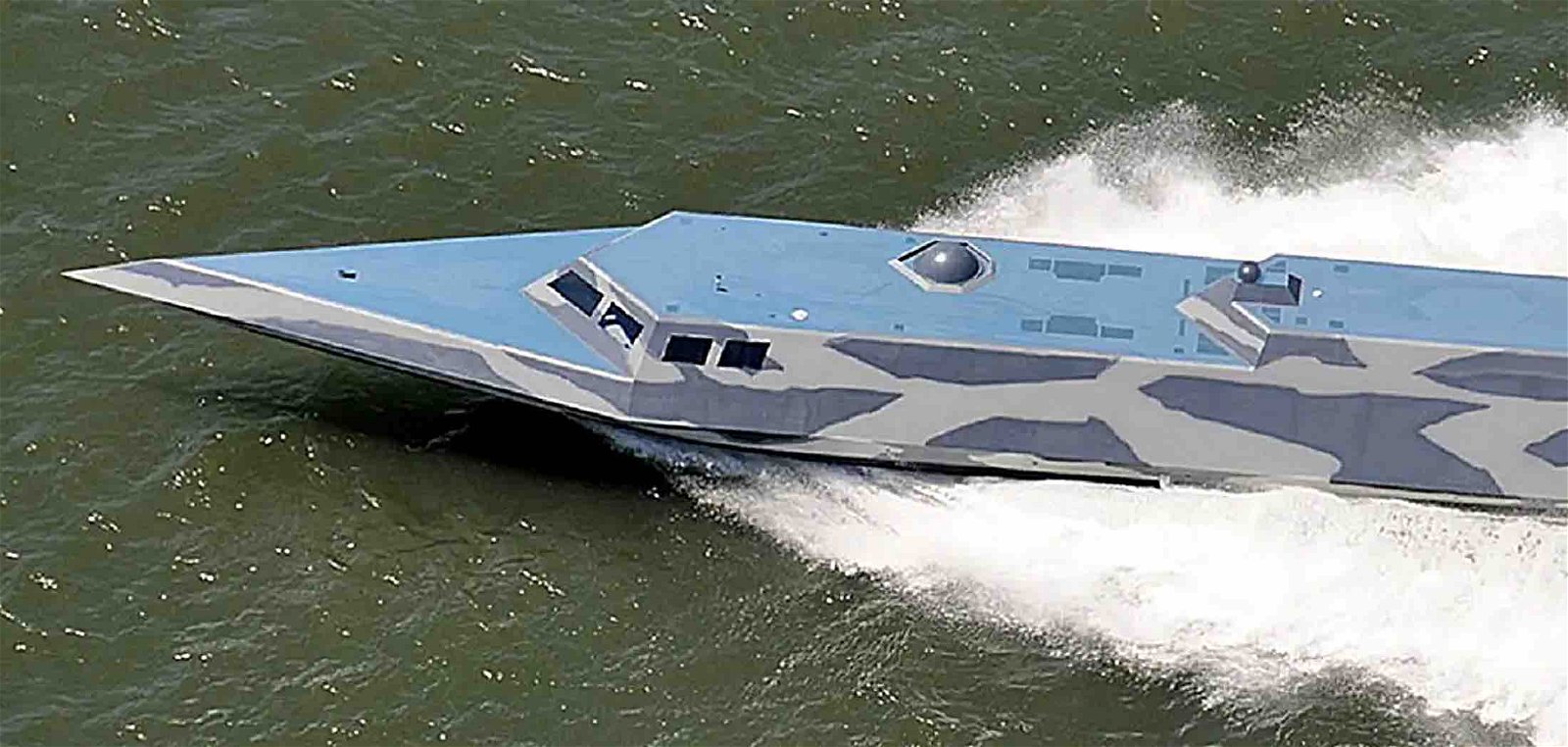A team of researchers has demonstrated that a semi-submersible (or semisub) vehicle traveling at the water line is more fuel efficient and virtually undetectable compared to conventional watercraft. The researchers behind the prototype semi-sub autonomous craft say their approach could offer commercial clients a more efficient way of transporting cargo and provide the military with a whole new type of nearly invisible autonomous spycraft.
Stealth At Sea May Be All About the Water Line
When most people hear the word ‘stealth,’ they probably think of black-clad aircraft with odd angles and specialized materials designed to reflect away radar signals. But when it comes to traveling in water, it may not only be the shape and materials of your vessel, but where it travels, that renders it less likely to show up on radar and sonar.
According to a press release from Washington State University announcing recently published research, the best way to travel in water undetected and efficiently is not on top or below, “but in-between.” That means semi-submerged.
Surprisingly, according to those same researchers, it is a method of transport that has yet to catch on.
“I am not aware of commercially available semisubs,” explained Konstantin Matveev, the WSU engineering professor leading this work, in an email to The Debrief, “but all submarines (including tourist subs) can operate in the semisub regime, although it may not be their primary mode.”
The professor did point out that there are “probably some military developments of semisubs,” but that information is not publically available. Perhaps unsurprisingly, there is one enterprise that is already taking advantage of the stealthy nature of traveling just below the water’s surface; the drug cartels.
“The most known application is the so-called narco-subs,” Matveev told The Debrief, “many of which are actually semisubs without significant diving capability.”
Now, the professor is explaining the science behind the increased stealth benefits and increased fuel efficiency of traveling ‘in-between” the water and the air by building his own semisub.
SemiSub Can Cross Oceans Virtually Undetected
First, Matveev and his co-author Pascal Spino, a recent WSU graduate and former president of the WSU RoboSub club, set out to build a scale model of a semisub that they could test in the lab, as well as in the waters of Snake River’s Wawawai Bay in Washington State.
“The hull shape is very important,” Matveev told The Debrief. “For efficiency, one would want a slender hull. For agility, a shorter version is preferable (like the semisub demo we constructed). For high speed on the water surface, the hull bottom should resemble that of a fast boat.”
The model they settled on is a shorter version, about 1.5 feet long and 4 inches in diameter. In testing, it topped out at about 3.4 miles per hour. But, the researchers note the faster this type of semisub design travels, the more likely it is to rise up above the water’s surface and increase its detectability. So, whether one prefers stealth or fuel efficiency, traveling slower is better.
“At lower speeds, it is almost fully immersed and barely makes a ripple,” the press release explains.
“Detectability will generally depend on the size of the above-water portion of the hull,” Matveev told The Debrief, “which in turn depends on how much weight the vehicle has.”
SemiSub Technology Could Affect Military Spycraft and Commercial Cargo Industry
The next step for Matveev and Spino involves testing and refining the ideal shape of the semisub for different potential applications. However, they have not yet ventured into the world of stealthy materials.
“We have not tested special stealth materials,” Matveev told The Debrief. “Topics of future tests depend on grants/funding we would get from sponsors, who would also define the scope of tests.”
Toward that end, Matveev and his team are working with the U.S. Naval Academy in Annapolis, Maryland, to explore potential applications of their semisub research. But, he notes, whether it is for a commercial application or a military one, semisubmersible technology is ready to fill a gap in the marketplace.
“Besides traditional surface ships and submarines, there is a niche for semisubs,” Mateev told The Debrief. “They can be used either in applications where low detectability is of value or for commercial transport at relatively fast speeds.”
So, Matveev concludes whether a client is looking for increased fuel efficiency or less detectability, semisubs are inexpensive and can travel great distances autonomously.
“A semi-submersible vehicle is relatively inexpensive to build, difficult to detect, and it can go across oceans,” said Matveev.
Christopher Plain is a novelist, comedian, and Head Science Writer at The Debrief. Follow and connect with him on Twitter, learn about his books at plainfiction.com, or email him directly at christopher@thedebrief.org.

